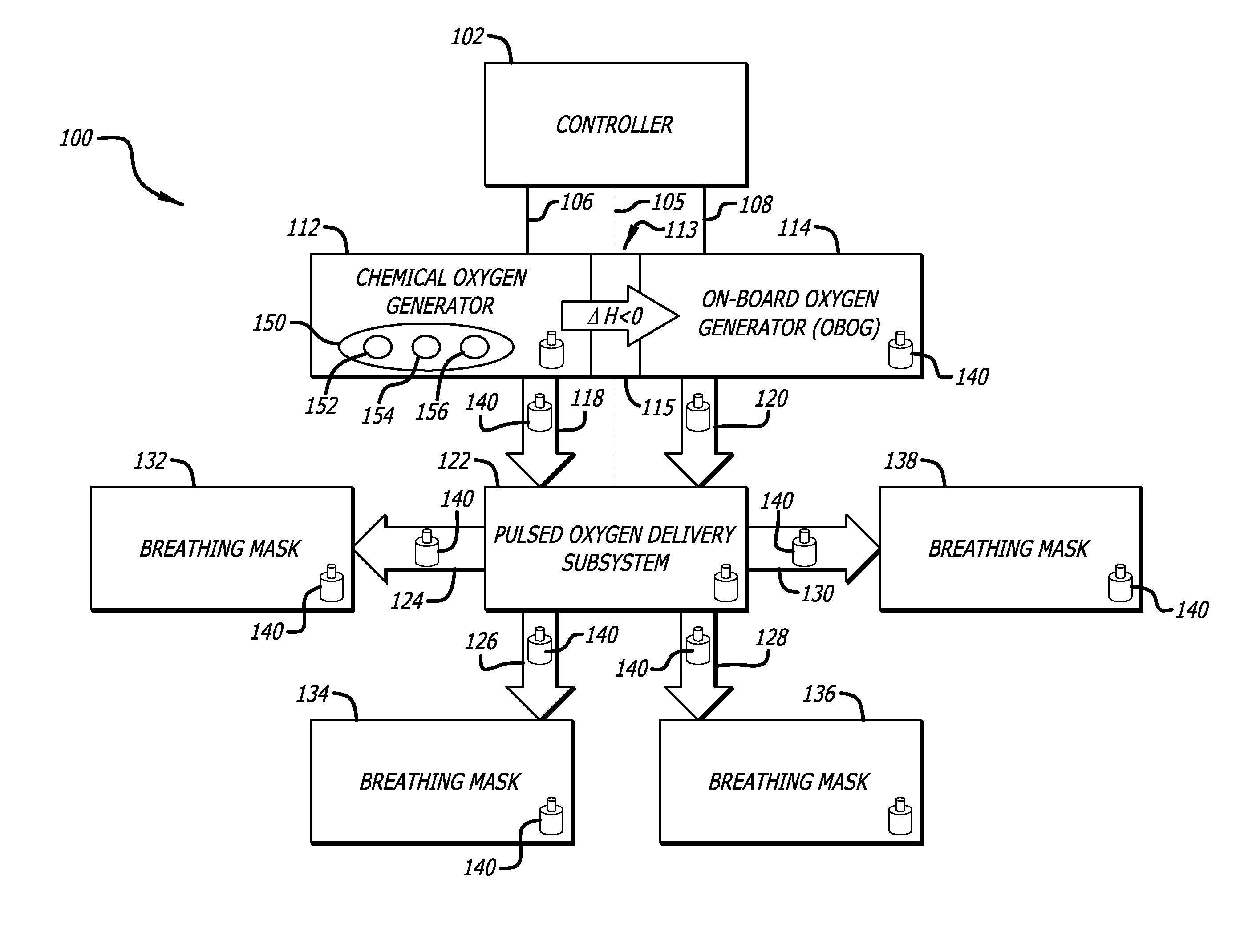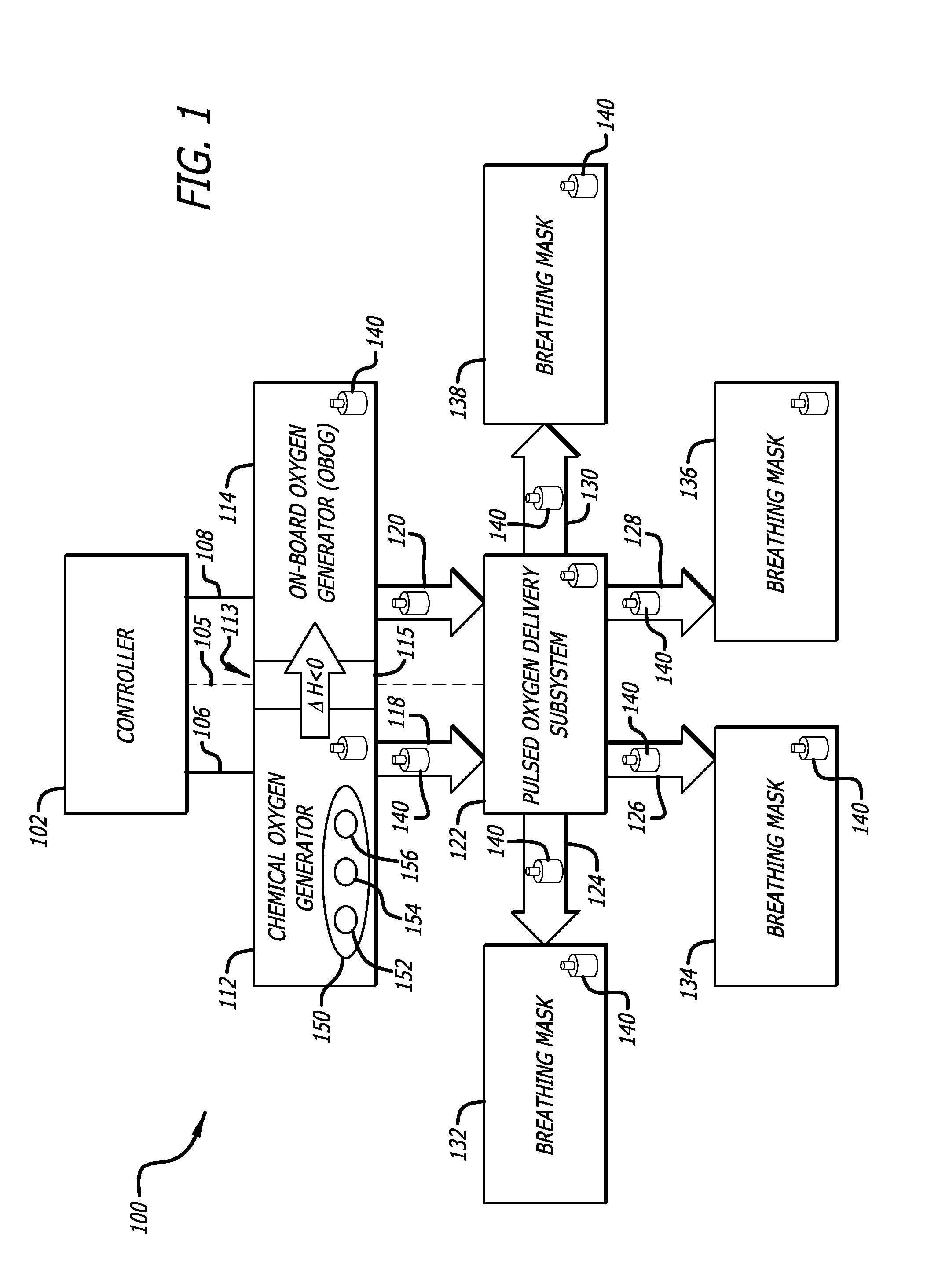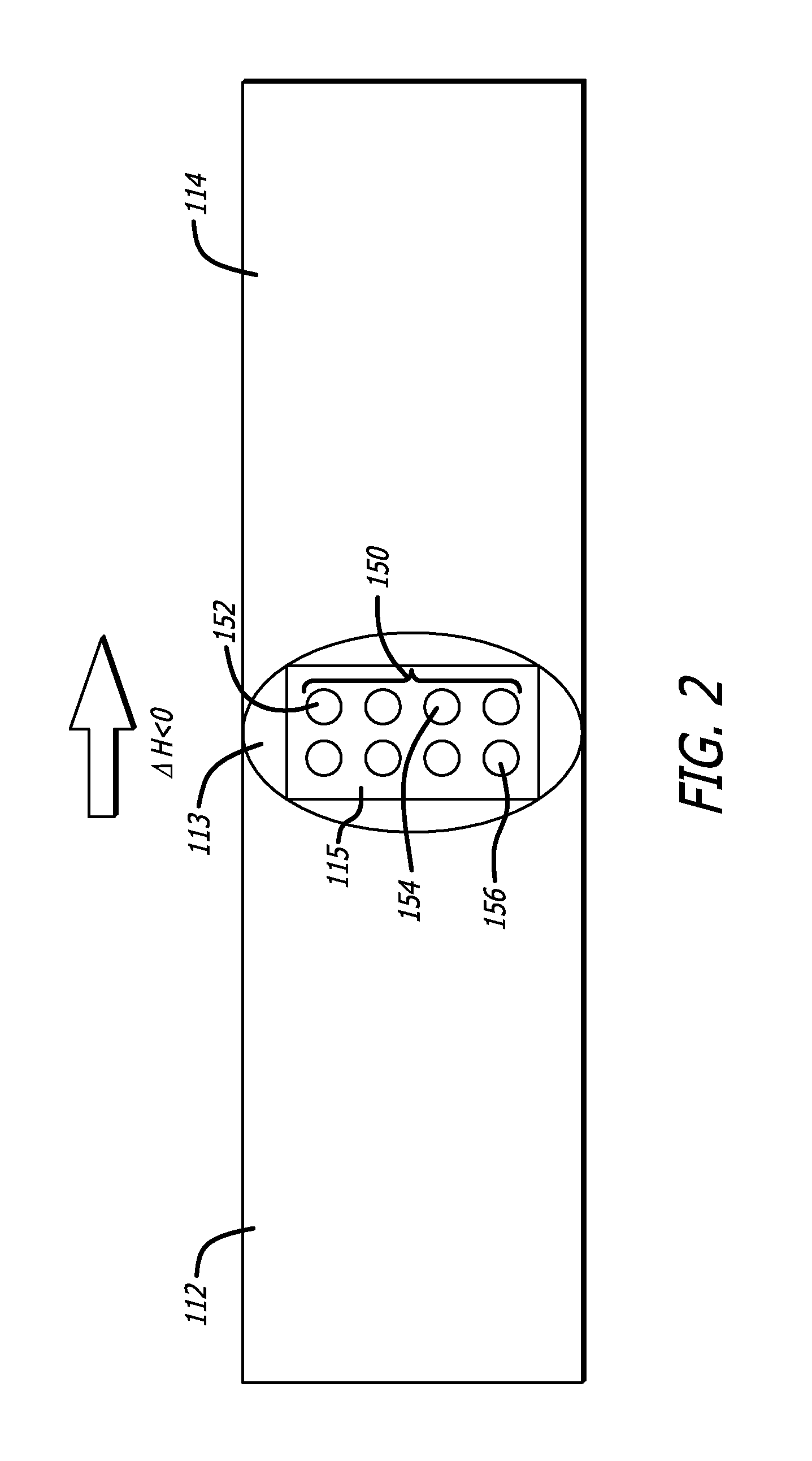Hybrid on-board generation of oxygen for aircraft passengers
a technology for aircraft passengers and hybrid oxygen, which is applied in the direction of emergency oxygen systems, energy-saving board measures, emergency apparatus, etc., can solve the problems of increasing maintenance costs, increasing hazard potential, and increasing weight, and achieves faster heat generation, convenient use, and shorter time frame
- Summary
- Abstract
- Description
- Claims
- Application Information
AI Technical Summary
Benefits of technology
Problems solved by technology
Method used
Image
Examples
Embodiment Construction
[0036]Ceramic oxygen generator (COG) systems utilize solid electrolyte oxygen separation (SEOS) technology in which oxygen is catalytically separated from air inside specialized ceramic materials at high temperatures, about 650° C. to 750° C., using electrical voltage. While this process produces substantially pure oxygen gas product at pressure and suitable for breathing at any altitude, including higher altitudes over 30,000 feet, the drawback is that the oxygen is not promptly available upon powering on the device because the device has to reach the high required operating temperature first. Due to the high operational temperature requirement, there is typically a time lag before full oxygen capacity from a ceramic oxygen generator or solid electrolyte oxygen separator can be fully utilized.
[0037]Provided herein is a hybrid system and method for generating, supplying and maintaining adequate reserves of oxygen. One preferred application for the present invention is to provide oxy...
PUM
 Login to View More
Login to View More Abstract
Description
Claims
Application Information
 Login to View More
Login to View More - R&D
- Intellectual Property
- Life Sciences
- Materials
- Tech Scout
- Unparalleled Data Quality
- Higher Quality Content
- 60% Fewer Hallucinations
Browse by: Latest US Patents, China's latest patents, Technical Efficacy Thesaurus, Application Domain, Technology Topic, Popular Technical Reports.
© 2025 PatSnap. All rights reserved.Legal|Privacy policy|Modern Slavery Act Transparency Statement|Sitemap|About US| Contact US: help@patsnap.com



